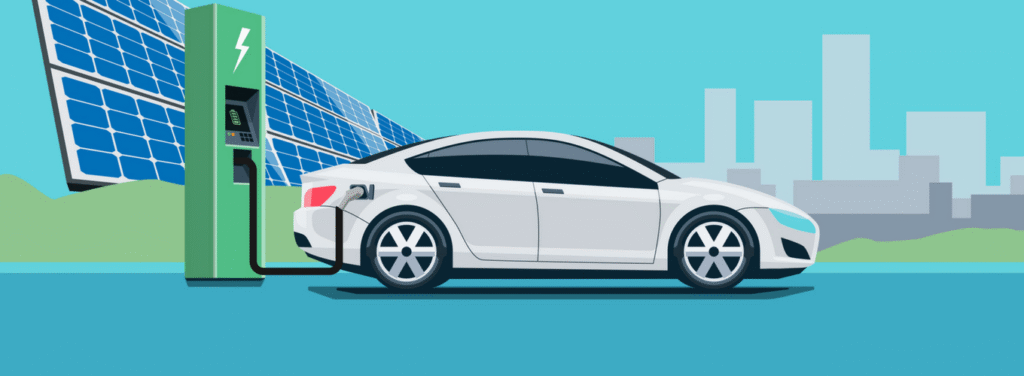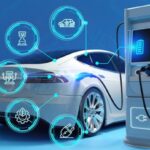
The Electric Revolution: Why Electric Vehicles Are Driving Us Toward a Better Future

The automotive industry stands at a pivotal moment. After more than a century of internal combustion engine dominance, electric vehicles (EVs) are rapidly transforming how we think about transportation. What was once considered a niche technology for early adopters has evolved into a mainstream solution that addresses some of our most pressing environmental, economic, and technological challenges.
Environmental Impact: A Breath of Fresh Air
The most compelling argument for electric vehicles lies in their environmental benefits. Transportation accounts for approximately 29% of greenhouse gas emissions in the United States, with passenger vehicles responsible for more than half of that figure. Electric vehicles produce zero direct emissions, and even when accounting for electricity generation, they typically produce 60-70% fewer emissions than their gasoline counterparts over their lifetime.
As renewable energy sources like solar and wind power continue to expand, the environmental advantages of EVs will only grow. In regions where the electrical grid runs primarily on clean energy, electric vehicles already operate with near-zero carbon footprints. This creates a virtuous cycle where increased EV adoption drives demand for clean electricity, further accelerating the transition to renewable energy.
Economic Advantages: More Than Just Fuel Savings
While the upfront cost of electric vehicles has historically been higher than traditional cars, the total cost of ownership tells a different story. Electric motors are remarkably efficient, converting about 77% of electrical energy into power at the wheels, compared to just 12-30% for gasoline engines. This efficiency translates to significant savings at the “pump” – or rather, the charging station.
Maintenance costs also favor electric vehicles substantially. EVs have fewer moving parts than conventional cars, eliminating the need for oil changes, spark plug replacements, and many other routine maintenance items. Regenerative braking systems reduce wear on brake pads, and electric motors can last hundreds of thousands of miles with minimal maintenance.
The economic benefits extend beyond individual consumers. Countries investing heavily in electric vehicle infrastructure and manufacturing are positioning themselves as leaders in the next generation of automotive technology, creating jobs and reducing dependence on oil imports.
Performance and Technology: Redefining the Driving Experience
Electric vehicles have shattered preconceptions about performance. Electric motors provide instant torque, delivering acceleration that often surpasses high-performance gasoline engines. The Tesla Model S Plaid can accelerate from 0-60 mph in under 2 seconds, while even modest electric vehicles offer smooth, quiet operation that many drivers find superior to traditional engines.
The integration of advanced technology comes naturally to electric vehicles. Over-the-air software updates can improve performance and add features long after purchase. Advanced driver assistance systems, sophisticated infotainment platforms, and smart charging capabilities make EVs feel more like smartphones on wheels than traditional automobiles.
Infrastructure and Convenience: The Network Effect
Range anxiety – the fear of running out of charge – was once a significant barrier to EV adoption. Today, that concern is rapidly becoming obsolete. Charging infrastructure has expanded dramatically, with networks like Tesla’s Supercharger system and various third-party providers creating comprehensive coverage across major travel routes.
Home charging adds a convenience factor that gasoline vehicles cannot match. Most EV owners charge overnight in their garages, starting each day with a “full tank.” For many drivers, this eliminates trips to gas stations entirely, saving time and adding convenience to daily routines.
Industry Momentum: The Tipping Point
Major automakers have committed billions of dollars to electric vehicle development. General Motors plans to phase out gasoline vehicles by 2035, while Volvo aims to go all-electric by 2030. This industrial transformation reflects not just environmental consciousness but market reality – consumers increasingly prefer electric vehicles, and manufacturers are responding accordingly.
Government policies worldwide are accelerating this transition. Many countries have announced phase-out dates for internal combustion engines, while offering incentives for EV purchases. These policies create certainty for manufacturers and consumers alike, encouraging investment in electric vehicle technology and infrastructure.
Challenges and the Path Forward
Electric vehicles are not without challenges. Battery production requires rare earth elements, raising questions about mining practices and supply chain sustainability. Cold weather can reduce range, and rural areas still lack comprehensive charging infrastructure. However, these challenges are being actively addressed through technological innovation and infrastructure investment.
Battery technology continues improving rapidly, with new chemistries promising longer range, faster charging, and reduced environmental impact. Solid-state batteries, currently in development, could revolutionize the industry by providing even better performance while using more sustainable materials.
Conclusion: An Electric Future
The transition to electric vehicles represents more than just a change in propulsion technology – it’s a fundamental shift toward a more sustainable, efficient, and technologically advanced transportation system. Environmental benefits, economic advantages, superior performance, and growing infrastructure support all point toward an electric future.
While challenges remain, the momentum behind electric vehicles has reached a tipping point. Early adopters have proven the technology’s viability, manufacturers have committed to the transition, and governments worldwide are supporting the shift through policy and investment. The question is no longer whether electric vehicles will dominate the automotive landscape, but how quickly that transformation will occur.
For consumers, businesses, and society as a whole, embracing electric vehicles offers an opportunity to participate in one of the most significant technological transitions of our time – one that promises cleaner air, energy independence, and a more sustainable future for generations to come.
















Post Comment